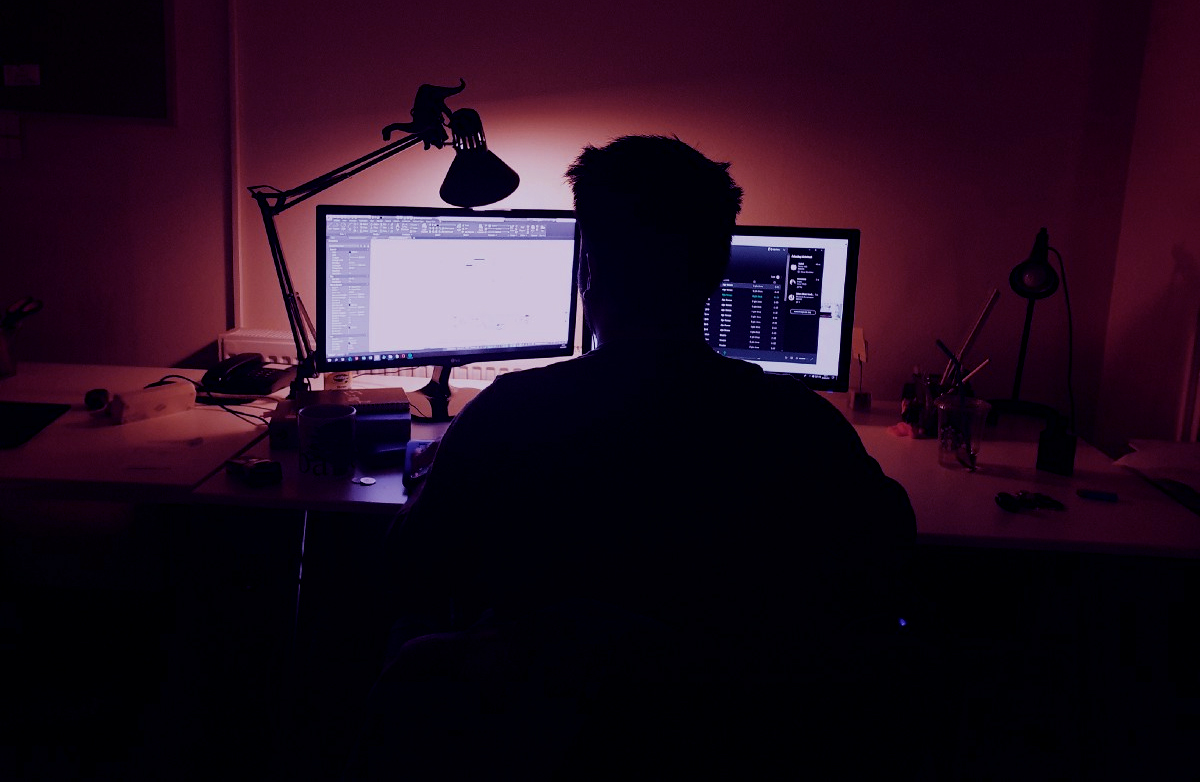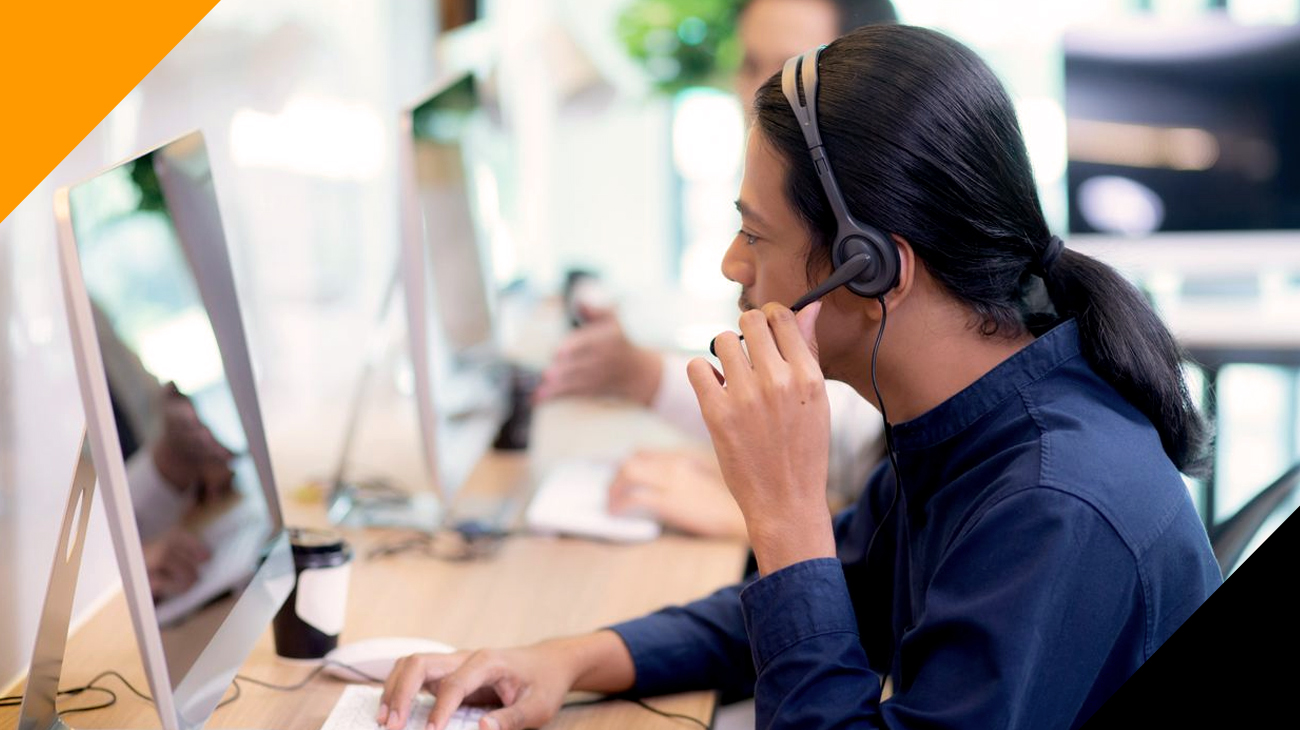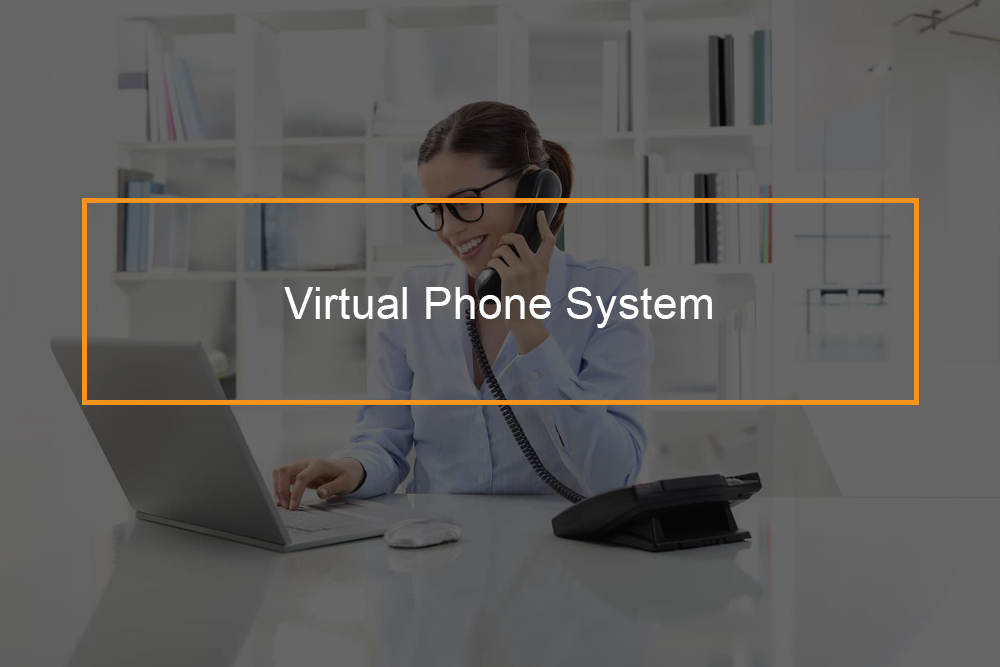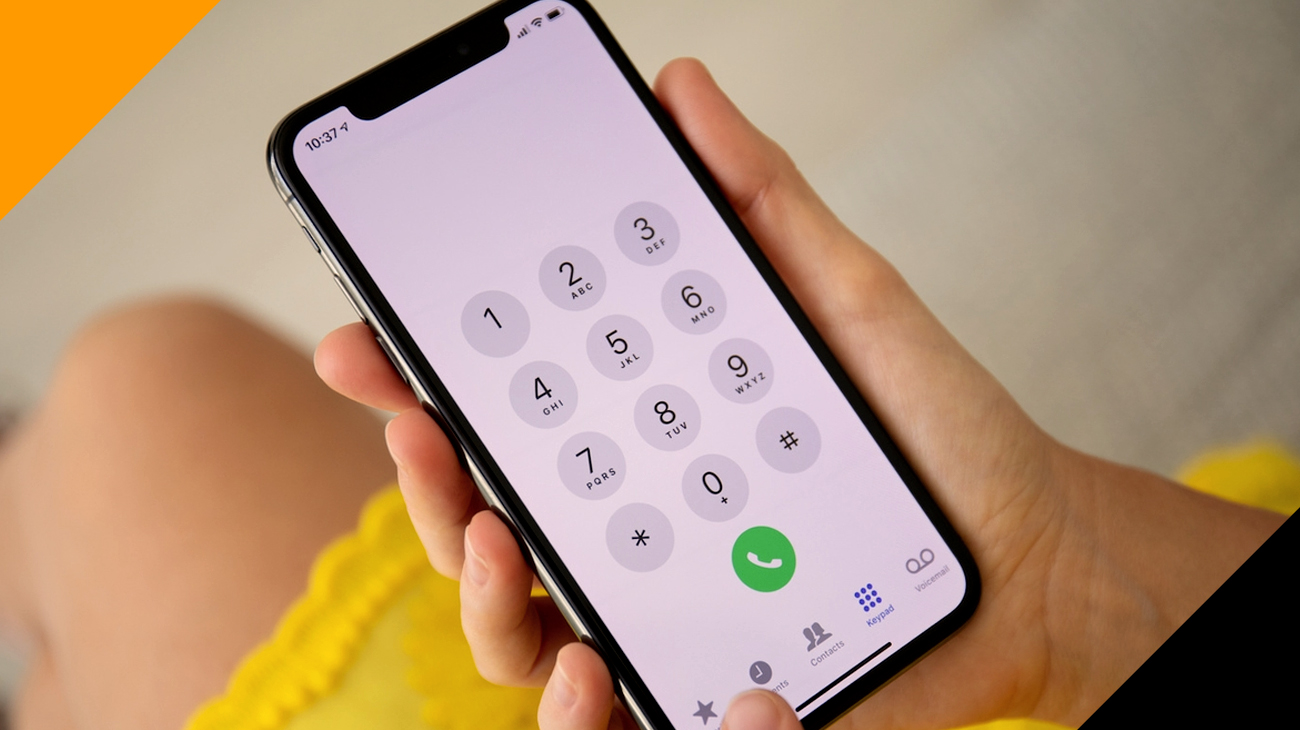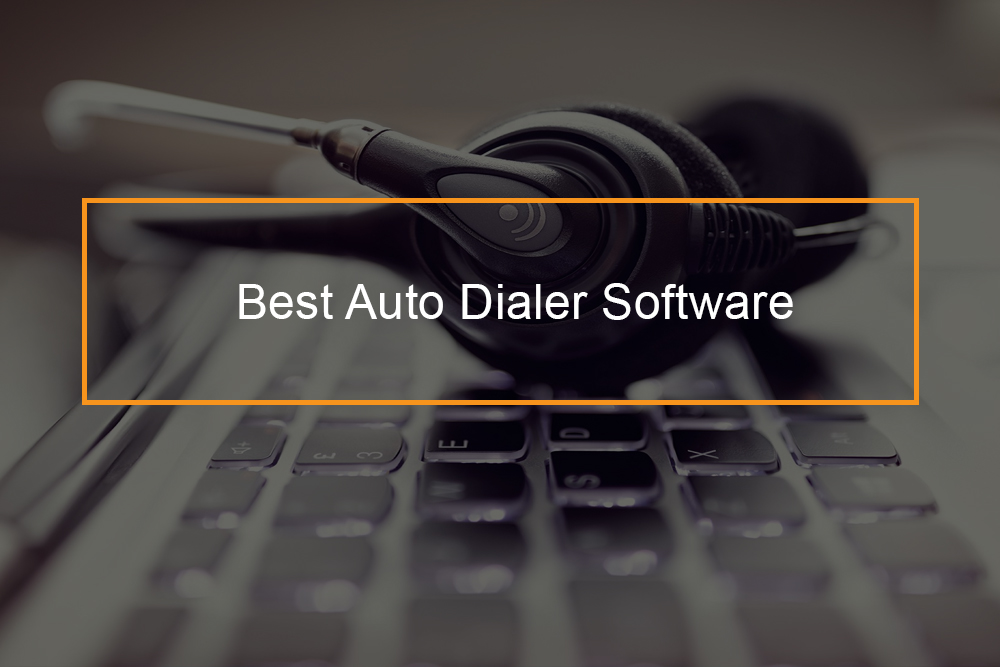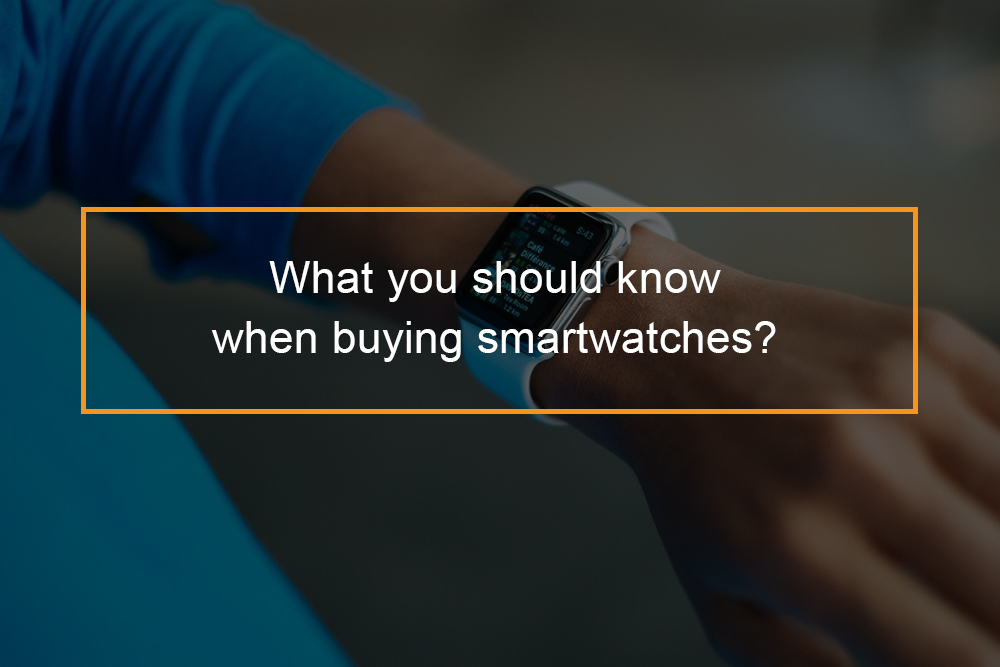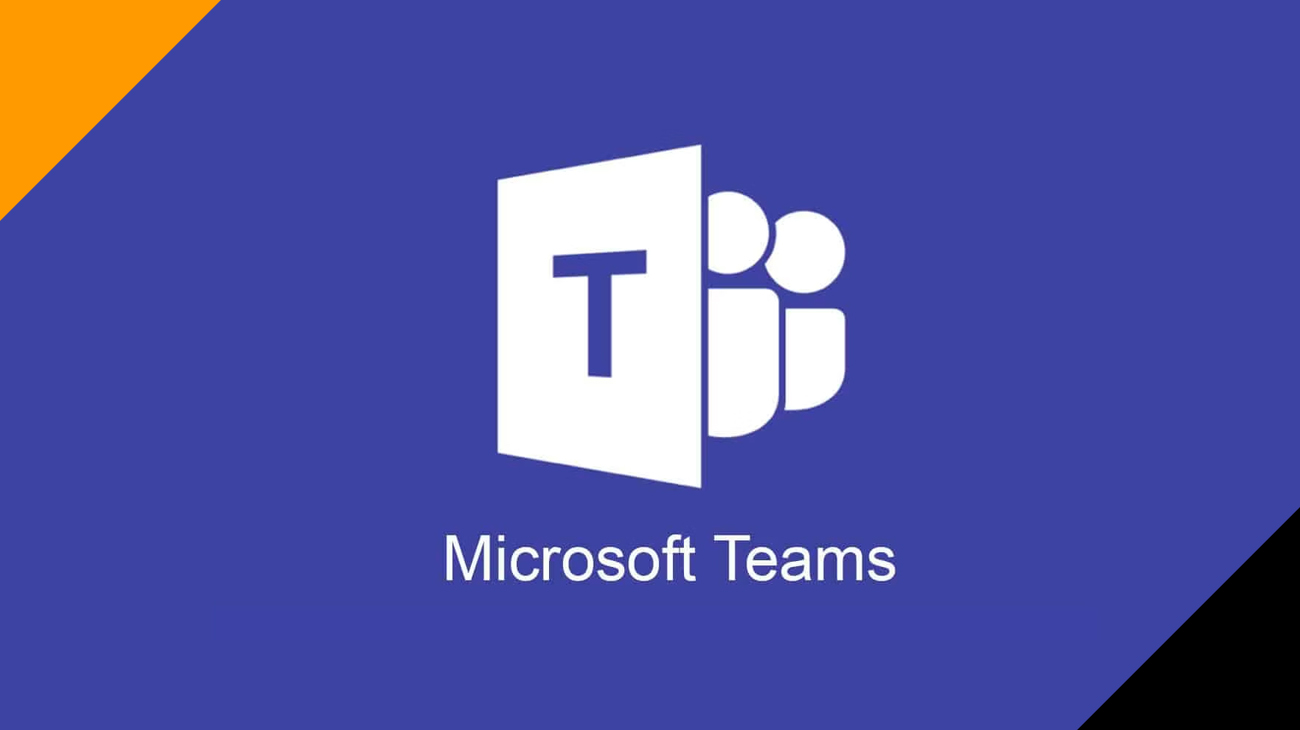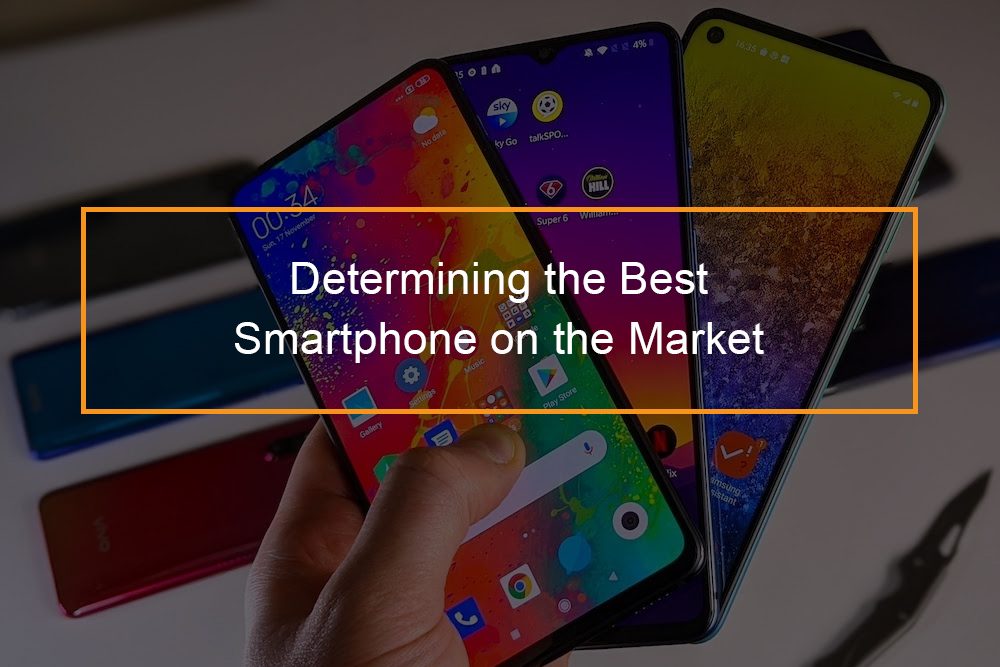
In order to choose the best the best smartphone, you need to focus on the features that the phone offers. Nowadays smartphones have in a way been attached to us, and we use them everywhere, even in the restroom. You don’t want to have a device that frustrates you. As a user you need to consider whether the phone has a decent battery life regarding mA; is the phone designed swell, the screen resolution, camera quality and the size of the cell phone. Phone companies constantly launch smartphones on the market, and it’s not easy to decide which cell phone you want to buy.
Which is the better smartphone? Android or iPhone?
Comparing Android and iPhone
When you want to buy among the best smart devices, the very first choice can be the hardest: iPhone or Android. It’s not easy; both use plenty of fantastic features, and they might appear the very same aside from brand name and rate. Nevertheless, a closer appearance reveals that there are some key distinctions. Continue with this article to get a better conviction on whether to choose an iPhone or an Android smartphone.
iPhone vs. Android: Hardware
Hardware is the top place where the distinctions between the iPhone and Android end up being clear. Only Apple makes iPhones, so it has precise guidelines on the way Hardware and software function concurrently. At the same time, Google offers the Android software application to numerous phone makers, consisting of Samsung, HTC, LG, and Motorola. Because of that, Android phones differ extensively in size, weight, features, and quality.
Premium-priced Android phones tend to be as impressive as the iPhone in regards to hardware quality. However, cheaper Android choices are more vulnerable to problems. iPhones can have hardware problems, too, but they’re generally higher quality. If you’re buying an iPhone, you merely require to pick a model. Since many companies design Android devices, you have to choose both a brand and a design, which can be a bit complicated. Some might prefer the higher option Android offers, but others appreciate Apple’s simplicity and quality.
Winner: Tie
iPhone vs. Android: OS Compatibility
Get an iPhone and stay abreast of the latest and most significant version of your smartphone. That’s since some Android makers are sluggish at updating their phones to the latest version of the Android OS version, and often don’t update their phones at all. While we expect that older phones will eventually lose assistance for the current OS, Apple’s support for older phones is usually much better than Android’s.
Take iOS 11 as an example. Now go back in time to when Apple was releasing iPhone 5S in 2013, it’s impressive to know that iOS 11 still supports this older OS. Thanks to supporting such an old gadget, and full availability for all other models, iOS 11 was set up on about 66% of compatible designs within six weeks after it hit the market.
Android 8 however, codenamed Oreo, was running on merely 0.2% of Android gadgets more than eight weeks after its release. Even its predecessor, Android 7, was operating on about 18% of devices more than a year after its release. The phone designers and manufacturers– not users– control when the OS comes out for their phones and, as statistics programs, a lot of business is extremely sluggish to update.
Winner: iPhone
iPhone vs. Android: Apps
The Apple App Store offers fewer apps than Google Play (around 2.1 million vs. 3.5 million, as of April 2018), but the overall choice isn’t the most crucial factor. Apple is notoriously strict (some would state too rigorous) about what apps it allows, while Google’s requirements for Android are lax. While Apple’s control might appear too tight, it also avoids circumstances like when 1 million users downloaded a fake version published on Google Play before being taken down. That’s a significant possible security hazard.
Beyond that, some designers have grumbled about the difficulty of developing for so many different phones. Fragmentation– the great deals of gadgets and OS versions to support– makes establishing for Android expensive. For example, the designers of Temple Run reported that early in their Android experience nearly all of their support emails pertained to unsupported gadgets although they support over 700 Android phones.
Combine development costs with the emphasis on totally free apps for Android, and it reduces the possibility that designers can cover their expenses. Essential apps are also usually launching first on iOS, with Android variations coming later on if they come at all.
Winner: iPhone
iPhone vs. Android: Gaming
Conventionally, mobile video gaming was predominantly Nintendo’s 3DS and Sony’s PlayStation Vita. The iPhone changed that. Apple’s gadgets like the iPhone and iPod touch, are maybe the dominant players in the mobile computer game market, with tens of countless terrific games and tens of many gamers. The come up of the iPhone as a gaming platform, in truth, has led some observers to anticipate that Apple will eclipse Nintendo and Sony as the leading mobile video game platform (Nintendo has even begun releasing games for the iPhone, like Super Mario Run).
The powerful combination of Apple’s software and hardware pointed out above has led it to be able to produce useful gaming innovations using hardware and software that make its phones as fast as some laptop computers. The initial expectation that Android apps should be free has led video game developers thinking about earning money to establish for iPhone initially and Android 2nd. Some video games companies have stopped producing games because of issues developing for Android. Even though Android has its share of hit games, the iPhone has a clear benefit.
Winner: iPhone
iPhone vs. Android: Integration with Other Devices
Most people utilize a tablet, computer system, or wearable in addition to their smartphone. For those people, Apple offers a more constant and integrated experience.Because Apple makes computer systems, tablets, and sees together with the iPhone, it uses things that Android (which primarily runs on mobile phones, though some tablets and wearables utilize it) can’t.
Apple’s Continuity includes let you open your Mac using an Apple Watch, begin composing an email on your iPhone while you’re strolling and finish it on your Mac in your home, or have all of your gadgets receive any call entering into your iPhone Google’s services like Gmail, Maps, Google Now, and so on, work across all Android devices, which is widely beneficial. However, unless your watch, tablet, phone, and computer are all made by the same business– and there aren’t too many manufacturers besides Samsung that make products in all of those categories– there’s no unified experience.
Winner: iPhone
iPhone vs. Android: Support
Both smartphone platforms generally work quite well and, for daily usage, usually do not malfunction. However, everything breaks down once in a while, and when that takes place, how you get assistance matters.With Apple, you can take your gadget to your closest Apple Store, here, a qualified expert can help solve your problem. (They’re hectic, however, so it pays to make a consultation ahead of time.).
There’s no equivalent on the Android side. Sure, you can get assistance for Android gadgets from the phone company you purchased your phone from, the maker, or perhaps even the store where you bought it, however, which should help you select and how sure are you people there have undergone proper training? Having a single source for skilled support gives Apple the upper hand in this classification.
Winner: iPhone
iPhone vs. Android: Intelligent Assistant
Artificial intelligence and voice interfaces will drive the next frontier of smartphone features and functionality. Android has a clear lead.Google Assistant, the most popular synthetic intelligence/intelligent assistant on Android, is exceptionally useful. It utilizes whatever Google learns about you and the world to make life simpler for you. For example, if your Google Calendar understands that you’re meeting somebody at 5:30 when there’s terrible traffic, Google Assistant alert you with a notification informing you to leave asap.
Siri is Apple’s equivalent to Google Assistant for artificial intelligence (AI). It’s enhancing all the time with each brand-new iOS release. That said, it’s still limited to relatively easy tasks and does not offer the advanced smarts of Google Assistant (Google Assistant is available for the iPhone).
Winner: Android
iPhone vs. Android: Battery Life
For early iPhones, you had to recharge the batteries every day. For more recent models you can skip a day or two without charging, though new versions of the OS tend to cut battery life till there’s improvement in later releases.The battery situation is more complicated with Android, due to the big range of hardware choices. There are Android phones with 7-inch screens and other functions which tend to overwork your battery.
But, owing to the wide variety of Android designs, there are also some that provide ultra-high capability batteries. If you do not mind the additional bulk and require a long-lasting battery, Android can deliver a device that works a lot longer than an iPhone on a single charge.
Winner: Android
iPhone vs. Android: User Experience
With an opened iPhone, you’ll feel this complimentary. Cultura RM/Matt Dutile/Getty Images.Individuals who want the complete control to customize their phones will choose Android thanks to its higher openness.One disadvantage of this openness is that each business that makes Android phones can personalize them, often changing default Android apps with inferior tools established by that business.
Apple, however, locks the iPhone down a lot more securely. Customizations are more restricted, and you can’t alter default or primary applications. The quality and attention to information of the iPhone make up for the inconvenience in adaptability.For a phone that works well, provides a premium experience and is simple to utilize, Apple is the clear winner. On the other hand, if you value versatility and choice enough to accept some potential concerns, you’ll most likely prefer Android.
Best Mobile Phones to Buy
List of the Best 8 Mobile Phones to Purchase Today
Here’s a detailed list that includes features of smartphones that you can choose from, based on your preference.
Google Pixel 3
RRP: From $799.
Specs:
- Weight: 175g
- Phone Dimension: 158 x 76.7 x 7.9 mm
- OS(Operating System): Android 9.0 Pie
- Screen dimensions: 6.3-inches Resolution: 1440 x 2960 pixels
- CPU: Qualcomm Snapdragon 845 RAM: 4GBStorage: 64/128GB Battery: 3430mAh Rear electronic camera: 12.2 MP f/1.8 Front electronic camera: 8MP +8 MP(megapixels) f/1.8 + f/2.2.
Pros:
- Superb video camera quality.
- Genuine Android 9.0 Pie out of the box
Cons:
- No on-screen fingerprint reader.
- Battery life is unspectacular.
The Pixel 3 XL and Pixel and are the ideal phones you can buy right now, offered you do not desire an iPhone. The only differences between both designs are the larger screen (and notch) and battery on the XL. They have the very best video camera ever on a smartphone, surpassing all competitors in many scenarios. Both have the most premium Google phone hardware to date, excellent battery life, can charge wirelessly and are water resistant. The notch might frustrate you on the 3 XL, but the smaller sized one exists with barely any compromise. The phones expense from $799.
Samsung Galaxy S9
RRP: $719.
Specs:
- Weight: 163g
- Phone Measure: 147.7 x 68.7 x 8.5 mm
- OS(Operting System): Android 8.0
- Screen Dimensions: 5.8-inches
- Resolution: 1440 x 2960
- pixels CPU: Exynos 9810 Octa RAM: 4GB
- Internal Storage: 64GB Battery: 3000mAh Rear electronic camera: 12 MP f/1.5 Front electronic camera: 8 MP f/1.7.
Pros:
- Amazing design
- Practically flawless.
- Now readily available at low rates.
Cons:
- Bixby AI is half-baked.
- Similar to Galaxy S8.
Beaten just by the OnePlus six thanks to that phone’s ludicrous rate, the Galaxy S9 is in many ways a more secure bet in 2018 regardless of costing more. It has whatever a modern-day phone can have consisted of cordless charging, full waterproofing, and an earphone jack. Unlike some phones, it likewise manages to have a substantial screen and sleek style without a bump on the upper section. It may resemble the Galaxy S8; however, it improves the video camera even further and adds dual speakers to validate the upgrade. It’s a pricey phone at $720, but often you need to pay to get the best. If you desire more screen, battery, and dual cams, then there’s the Galaxy S9 Plus.
OnePlus 6T
RRP: 6/128GB $549|8/128GB $579|8/256GB $629.
Specs:
- Weight: 185g Pixel 3 XL Measures: 157.5 x 74.8 x 8.2 mm
- OS(operating system): Android 9 Screen size: 6.41-inch
- Resolution: 1080 x 2340 CPU: Snapdragon 845 RAM: 6/8GB
- Storage: 128/256GB Battery: 3,700 mAh Rear cam: 20MP + 16MP
- Front electronic camera: 16MP.
Pros:
- In-display fingerprint scanner.
- All-day battery life
Cons:
- No headphone jack
- ‘ Only’ complete HD display screen.
Although it lacks an earphone jack, cordless charging, and waterproofing, the OnePlus 6T is still among the best phones you can buy today. It is reasonably priced, has the very best specs you might wish for, looks excellent and has electronic cameras that can take on its rivals. The glass building and construction, exceptional display, and lightning-quick efficiency start from $549 – an incredible cost, but you can find the Galaxy S9 for about the same now. The dual video cameras are a shade listed below the quality of the Pixel 3, but many people will not care or see. Of all the previous OnePlus phones, the OnePlus 6T is its best, and the phone with which its little compromises finally don’t matter.
Huawei Mate 20 Pro
RRP: From $999.
Specs:
- Weight: 189g
- Phone Size: 157.8 x 72.3 x 8.6 mm
- OS(Operating System): Android 9.0 Pie, EMUI 9.0
- Screen Dimensions: 6.39 inches Resolution: 1,440 x 3,120 CPU: Kirin 980 RAM: 6GB
- Internal Storage: 128GB
- Battery: 4,200 mAh
- Rear camera: 40MP + 20MP + 8M P
- Front camera: 24MP.
Pros:
- Kirin 980 CPU is insanely fast.
- The Leica-made camera system is excellent.
- Futuristic in-display fingerprint reader
Cons:
- None
It’s an indication of how great Huawei phones have become that there are two in our Top 10. The Mate 20 Pro has a big, lively OLED screen, particularly excellent battery life and remarkable triple electronic cameras with a slim notch. At ₤ 899 it’s Huawei’s most expensive phone yet (though you’ll have a hard time to purchase it in the US) and takes advantage of enhancements made to Huawei’s EMUI software. AI functions also improve the video camera experience over the P20 Pro, and it includes 3D face unlock and reverse cordless charging so it can charge other phones. Stereo speakers, waterproofing and 128GB storage, to ensure this is a phone that will last you into a minimum of 2 or 3 years of usage.
Apple iPhone XS
RRP: From $999.
Specs:
- Weight: 177g/ 208g
- Phone Size: 143.6 x 70.9 x 7.7 mm/ 157.5 x 77.4 x 7.7 mm OS: iOS12
- Screen Dimensions: 5.8 inches/ 6.5 inches Resolution: 1125 x 2436 pixels/ 1,242 x 2,688 pixels CPU: Apple A12 Bionic
- RAM: 4GB
- Internal Storage: 64/256/512GB
- Battery: 2658mAh/ 3174 mAh Rear video camera: Dual 12MP Front video camera: 7 MP f/2.2.
Pros:
- Exceptionally preferable.
- Massively effective and fast.
- Wonderful HDR screen
Cons:
- Average battery life.
The OLED screen is outstanding, and features like the secure Face ID unlock system makes it the most futuristic phone Apple has ever produced. Performance is flawless, much like the developing quality. It’s most likely still the most desirable phone in the world. It is quick and cordless charging compatible, but only comes with a sluggish battery charger in a package. But enhanced battery life and incredible dual video cameras still make the iPhone XS a no-brainer if you already enjoy iPhone and iOS. If you desire a bigger screen, there’s the iPhone XS Max.
Apple iPhone XR
RRP: 64GB $749|128GB $799|256GB $899.
Phone Features:
- Weight: 194g
- Phone Size: 150.9 x 75.7 x 8.3 mm
- OS(Operating system): iOS 12
- Screen Dimensions: 6.1 inches
- Resolution: 828 x 1792 CPU: Apple A12 Bionic (7 nm)
- RAM: 3GB
- Internal Storage: 64/128/256GB Battery: 2,942 mAh Rear camera: 12MP Front electronic camera: 7MP.
Pros:
- Modern, bright design
- Liquid Retina screen
- Outstanding build quality
Cons:
- Electronic camera system might be much better.
- Does Not Have 3D Touch
Apple iPhone XS is the very best iPhone for the majority of people right now while being one of the best phones in basic. At $749 it’s likewise more affordable than the iPhone XS and many Android flagships. Apart from an LCD screen and only one camera, it’s virtually as capable as the XS with the same A12 processor, wireless charging and Face ID. Six colors at launch offer a great option, and battery life is outstanding.
Huawei P20 Pro
RRP: $734.
Specs:
- Weight: 180g
- Phone Size: 155 x 73.9 x 7.8 mm
- OS: Android 8.1
- The Screen dimensions : 6.1-inches
- Screen Resolution: 1080 x 2244 pixels CPU: Kirin 970 RAM: 6GB Storage: 128GB Battery: 4000mAh
- Rear cam: Triple 40MP + 20MP + 8MP Leica Front camera: 24MP f/2.0.
Pros:
- Premium design
- Battery life
- Remarkable video camera
Cons:
- Software application
- ‘ Just’ HD screen.
The P20 Pro sticks out thanks to its three (yes, three) remarkable rear electronic cameras. Huawei has made a cam system special especially for night shots are your thing, then this phone will blow you away. Its glass and metal building and construction is so much better than the previous P10 phones, and if you choose the Twilight color, you’ll have a phone that turns heads. ₤ 799 is pricey, and it does not have wireless charging and an earphone jack, but it does not matter. It’s tough to discover in the United States, however with its EMUI software skin less intrusive than ever, Huawei has made the third-best phone of the year yet with the very best low light electronic camera. You may want to consider the smaller sized, less expensive Huawei P20.
Samsung Galaxy Note 9
RRP: From $999.99.
Specs:
- Weight: 201g Measures: 161.9 x 76.4 x 8.8 mm
- OS: Android 8.1 Screen size: 6.4-inches
- Resolution: 1440 x 2960
- pixels CPU: Qualcomm Snapdragon 845
- RAM: 6GB Storage: 128GB Battery: 4000mAh
- Rear cameras: 12 MP f/1.5 -2.4 + 12MP f/2.4
- Front camera: 8 MP f/1.7.
Pros:
- Top hardware.
- 6.4-inch Super AMOLED screen is spectacular.
- New S Pen digital stylus works fantastically.
Cons:
- 4,000 mAh battery is only competitive, not a standout.
- Bixby AI assistant is still definitely an operate in development.
Note 9 takes the winning style of the Note 8 and enhances it with better develop quality, a bigger screen, and a smartly put fingerprint scanner. The 4000mAh battery is likewise an incredible upgrade. The screen is the very best you’ll discover on a smartphone alongside stereo speakers, great electronic cameras and the smoothest Samsung software application yet. It’s too pricey for some beginning at ₤ 899 or $999, and you may not need the S-Pen, however, if its unique addition appeals to you, then this is the very best phone going.
Best Phone Overall
iPhone XS Max
- SCREEN SIZE (PIXELS) 6.5-inch OLED (2,688 x 1,242 pixels).
- CPUA12 Bionic.
- STORAGE/ EXPANDABLE64GB, 256GB, 512GB/ No.
- CAMS (BACK/ FRONT) Dual 12MP/ 7 MP.
- WEIGHT7.3 ounces.
- BATTERY LIFE (HRS: MINS) 11:30.
The iPhone XS Max is the very best smartphone cash can buy. Given, $1,099 is a great deal of loan, but for that price, you’re getting a large and gorgeous 6.5-inch OLED display screen, much-enhanced cams (particularly in low light) and the quickest processor in a smartphone. A standard iPhone XS has all of the very same upgrades, but we prefer limit for its bigger canvas for watching video, split-screen view within specific apps and longer battery life. If you’re going to spend lavishly on the phone to own for the next 2 to 3 years, this is it.
Best Camera Phone
Google Pixel 3
- SCREEN SIZE (PIXELS) 5.5-inch OLED (2160 x 1080).
- CPUSnapdragon 845.
- RAM4GB.
- STORAGE/ EXPANDABLE64GB, 128GB/ No.
- ELECTRONIC CAMERAS (BACK/ FRONT) 12.2-MP/ Dual 8-MP.
- WEIGHT5.2 ounces.
- BATTERY LIFE (HRS: MINS) 8:27.
The Pixel 3 is the best camera phone. Google has found remarkable methods to leverage AI on this 5.5-inch handset, including a Top Shot feature for the camera that immediately picks the best photo and a screen calling function that utilizes Google Assistant to transcribe calls as they can be found in on the fly. The photo quality here is merely sensational; you can even get optical zoom outcomes without a 2nd lens. Add in the equally wise and valuable Android Pie OS and an enhanced OLED screen, and you have one heck of a phone.
Best Android Phone
Samsung Galaxy S9
- SCREEN SIZE (PIXELS) 6.2-inch OLED (2960 x 1440 pixels).
- CPUSnapdragon 845.
- RAM6GB.
- STORAGE/ EXPANDABLE64GB/ Yes.
- CAMS (BACK/ FRONT) 12 MP and 12 MP/ 8 MP.
- WEIGHT 190 grams.
- Battery Standby Time (HRS: MINS) 10:59.
Galaxy S9 and S9+ have the nearly bezel-free design and wraparound Infinity Display from the S8 and boost it with the most recent generation Snapdragon 845 processor and a brand new camera fitted with extremely slow-motion recording and adjustable aperture. The bigger S9+ goes a step further, with a second rear electronic camera that makes it possible for Live Photos, Samsung’s take on portrait mode where you can change the effect of the bokeh effect the beginning and end of the capture. Stereo speakers, a relocated fingerprint sensor and a headphone jack, and you have a gratifying follow-up.
Best Value Smartphone
OnePlus 6T
- Screen Size (PIXELS) 6.4-inch OLED (2340 x 1080).
- CPUSnapdragon 845.
- RAM6GB, 8GB.
- STORAGE/ EXPANDABLE128GB, 256GB/ Yes.
- CAMS (BACK/ FRONT) 16-MP, 20-MP/ 20-MP.
- WEIGHT6.52 ounces.
- BATTERY LIFE Not Yet Tested.
The OnePlus 6T provides a couple of key features at a fantastic cost. It’s the first phone offered in the U.S. with an on-screen fingerprint reader– and it works practically quickly. The 6T is also the very first phone from OnePlus provided through a U.S. provider in T-Mobile. Whether you go that path or purchase it unlocked, you’ll enjoy the OnePlus 6T’s strong efficiency, stunning 6.4-inch OLED display, and improved double cameras. You get fantastic specifications for the cash: a Snapdragon 845 processor, 6GB of RAM and 128GB of storage for just $549 (₤ 499, EUR549) or you can update that to 8GB of RAM for only $20 more at $579 (₤ 529, EUR579).
Best iPhone Value
iPhone XR
- SCREEN SIZE (PIXELS) 6.1-inch LCD (1792 x 828).
- CPUA12 Bionic.
- RAMN/A.
- STORAGE/ EXPANDABLE64GB, 128GB, 256GB/ No.
- CAMERAS (BACK/ FRONT) 12-MP/ 7-MP.
- WEIGHT 190 grams.
- Battery Standby Time 11hrs:26mins
Another significant advantage is that iPhone XR is $250 less expensive than the iPhone XS and Galaxy Note 9, and yet this phone delivers pretty much whatever you want from a big-screen flagship. That consists of an intense and vibrant 6.1-inch LCD show, the fastest processor you can get in a phone (A12 Bionic) and excellent video camera quality. No, you don’t get a second rear cam for 2X optical zoom. The battery life is the best feature, as the iPhone XR lasts about 11 hours and 28 minutes on a web surfing battery test. That beats many flagship phones.
Best Phone Under $250
Moto G6
- Screen Size (PIXELS) 5.7-inch LCD (2160 x 1080).
- CPUSnapdragon 450.
- RAM 3GB.
- STORAGE/ EXPANDABLE32GB/ Yes.
- CAMS (BACK/ FRONT) 12MP, 5MP/ 8MP.
- WEIGHT 168 grams.
- Battery Standby Time 8hrs:35mins.
With Moto’s G Series vibrant 5.7-inch display, capable processor and inviting style, this year’s Moto G6 continue to live up to that standard. You’ll need to deal with below-average battery life and a just-OK camera, however, the G6 provides on adequate features to make it a fantastic worth. Best of all, the G6 deals with both GSM and CDMA networks, so you’re not restricted to using select providers.

